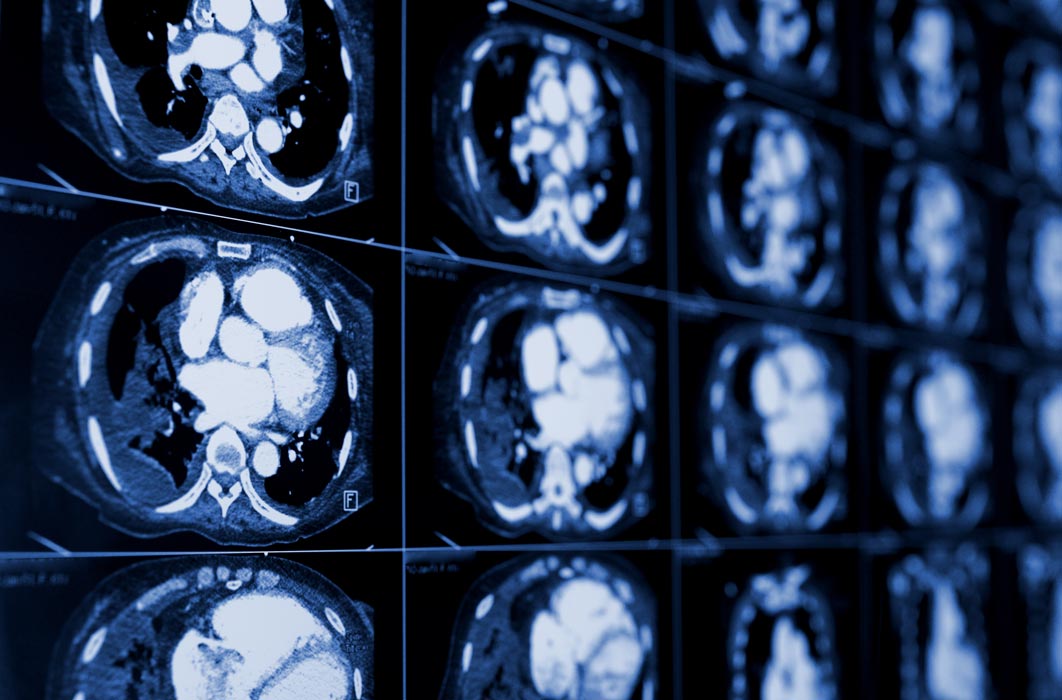
WHAT IS CT?
Computed Tomography, commonly known as CT, uses x-rays and computer technology to produce an image of the body. Unlike a traditional x-ray, CT scans show detailed images of the body. This allows radiologists to see different types of body structures, such as bone, soft tissue and blood vessels.
What is a CT scan used for?
A CT scan is an outpatient procedure. Because CT show greater detail and produces high-quality images, it has many uses for diagnosis and treatment of many diseases and conditions. Some of the most common include:
- Diagnose and treat cancer
- Plan and guide radiation treatments for tumors
- Guide biopsies and other minimally invasive procedures
- Plan surgery
- Diagnose spinal problems
- Identify injuries to the liver, spleen, kidneys, brain or other internal organs
- Detect vascular disease that can lead to heart attack and stroke
How to prepare for a CT
Typically, no special preparation is needed for a CT scan. However, there are a few things to keep in mind when preparing for your study, including:
- Bring a copy of the order for the procedure from your referring physician, your insurance card and photo identification
- On the day of your exam, wear comfortable, loose-fitting clothing
- Avoid clothing with metal zippers, hair pins, jewelry and snaps
- Drink plenty of clear fluids, but do not eat solid food for 3 hours before the examination
- Patients scheduled for abdominal and/or pelvic studies should arrive 30 minutes early to drink oral contrast material used to better visualize the stomach and intestines
- Take your usual medications
- Always inform your technologist or doctor if you are pregnant or could be pregnant
What to expect during a CT
A CT examination usually takes about five to ten minutes. The technologist will ask you to lay on the CT table and help position you based on your study. You will be alone in the room during your scan; however, the technologist can see, hear and speak with you at all times.
When your examination is over, you may resume your normal daily activities unless otherwise instructed by your doctor. One of our board-certified radiologists will review the images and send a report to your doctor.
What if I’m claustrophobic?
Some claustrophobic patients may experience a “closed in” feeling during a CT scan. If this is a concern, you may receive a sedative, or conscious sedation, during your exam. Please let us know prior to your appointment if you think you will require a sedative.
What if I require contrast?
Some CT examinations require that you take a special dye, often called “contrast.” Contrast can provide clearer images and allow better diagnostic capabilities. If you are given contrast, you might be asked not to eat or drink anything for 3-4 hours before the test. Contrast given through an IV might cause a metallic taste in the mouth, nausea and a warm flushing sensation. These sensations are normal and usually go away within a few minutes. Contrast typically does not cause symptoms; however, some mild symptoms, such as nausea, headache or itching. More complex side effects are rare; however, if you experience severe symptoms, inform your doctor immediately.
If you have kidney disease or diabetes, you should receive plenty of fluids before and after the test and be closely monitored for kidney problems. If you have diabetes or are on kidney dialysis, talk to your health care provider before the test about your risks.
